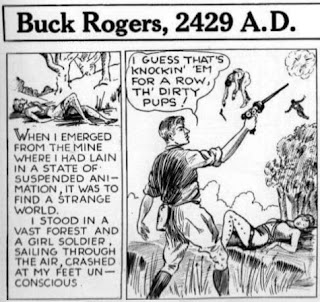Flip the frog sings to faces on the wall that urge him to have one of them attached to his head in
Funny Face.

“You can’t go wrong with a face like mine,” says one face, grinning. “A face like his? Ha ha ha!” sings the other faces. The poor face becomes forlorn.




“A pan like this will suit you fine,” sings the next face. “A pan like that? Oh, ho, ho, ho!” is the response from the chorus, which provokes Iwerks’ usual radiating lines from the head.


Now the stereotypes. “I’m sho’ handsome, as you can see, the gals down South, sho’ go fo’ me,” says the black face. He doesn’t have much of a drawl and the chorus doesn’t make fun of him; the camera pans to the next stereotype.

Time for a gay joke. “How would you like to look like me?” says the tarted-up man. “Look like him? Whoops my dear!” adds the chorus. “How would you like to look like me?” he repeats, then starts kissing the air, then turns and looks coy.



Flip doesn’t get any of those faces, and at the end of the cartoon, the girl-friend that treats him like crap through the cartoon accepts his real face, and they’re happy together at the end.
Iwerks is the only one to get credit in this 1932 cartoon.
Personally, I think it would have been funny to have one of the rejected faces look like Walt Disney.


















































